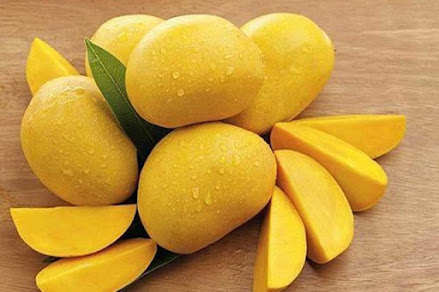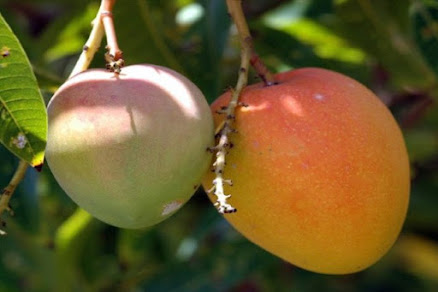How to recognize mango?
The king of fruits is mango and the king of mangoes is hapus! What is the price of hapus in any market today? This question is often asked. Then comes the number of other mangoes. The price of hapus is higher in all mangoes. But mangoes of other species besides hapus are also found in Mumbai. But how exactly do you recognize these mangoes?
Hapus
Alfonso is the classical name for this delicious and equally expensive mango. During the Portuguese rule, Alfonso di Albuquerque created a new variety of mango, Hapus, by grafting from one tree to another. But over time, the word Alfonso became a corruption of the name Hapus in the Indian language.
There are two varieties of these mangoes namely Devgad and Ratnagiri Hapus. Now, it is a different matter whether Hapus belongs to Ratnagiri or Devgad. But recently it has been revealed that Hapus belongs to the entire Konkan.
Devgad hapus
1) has more aroma. The color of Devgad hapus is yellowish and somewhat orange. The shape of the mango is very similar to that of a coir. The stalk is short and the mouth is pointed.
The fruit is orange and ripe when ripe. Devgad is very tasty and sweet. While eating Devgad mango, it tastes good. The skin of Devgad hapus is thin.
Ratnagiri Hapus
Ratnagiri hapus has less aroma than Devgad hapus. When this mango ripens, its color turns yellow. The taste is very sweet and the taste is a little less.
Ratnagiri hapus weighs 200 to 250 grams. Ratnagiri mango is sweeter than other mangoes. The taste of this mango reaches the throat. The skin of Ratnagiri hapus is thick.
Totapuri
Totapuri A parrot is a parrot's beak-shaped mango. This is why it got the name '. It is a major caste in Karnataka and is also known as 'Bangalore'. Totapuri has steep curves at both ends.
Totapuri mango is green, yellow in color and has bright reddish stripes on it. Although of ordinary quality, totapuri are durable. Due to abundant and regular production, this mango can be sent to distant markets.
Raiwal
Raiwal mango is an abundant mango found in the Konkani land. In terms of color, smell, taste and size, Raiwal Mango is something else! The taste of mango on each tree is different, its size is also different. Raiwal mango juice is very thin compared to hapus.
That is why it is also called mango to be eaten properly. Which goes to this mango. This is because everyone from the common man to the upper class enjoys eating this mango, which is abundant every year on the farm and in the backyard.
Payari
Steps In Konkan, some parts of Ratnagiri and Vengurle, Kudal, Malvan, Kankavali are found in large quantities. Hapus is a high yielding variety of mango.
Step Mango is medium sized, attractive red in color. This mango is juicy and sweet. But after ripening, this mango does not last long.
Saffron (Kesar)
Saffron Along with Konkan, saffron mango is considered famous in many parts of western and northern Maharashtra. In terms of yield, saffron mango is twice as much as hapus, so it is widely grown.
Saffron mangoes are delicious and sweet to the taste. These mangoes last for five to six days after ripening. As this mango is juicy, it is used for Amarsa.
Dasheri
The Dussehra caste is considered famous in North India. This mango is medium in size and elongated. The color of this mango is yellow, scarlet and it has great taste and flavor.
You can cut and eat this mango as it has no line. Apart from this, even if it is kept in an airtight container, it lasts well.
Sapphire (Nilam)
Sapphire It is a major caste in South India. The mango is yellowish orange in color and oval in shape. Sapphire mangoes ripen late.
But this mango is available in large quantities and regularly.
Ratna
Ratna Mango is widely grown in Sangli, Satara, Pune and Jalgaon in Western Maharashtra. This mango appears in small markets. This mango is larger than hapus and is thick and linear. But it tastes like hapus. This mango lasts for a good eight days after ripening.
This tree bears fruit every year. Unlike hapus, there is no gap of one year. This breed was created by Konkan Agricultural University in 1982 from a hybrid of sapphire (male) and hapus (female).
Indus (Sindhu)
Indus The Indus mango with its attractive red hue is delicious to the taste. Since this mango is very small, it gives maximum opportunity to eat mango. When mango is ripe, the aroma coming from it is pleasant.
This mango is lineless. The breed was created by Konkan Agricultural University in 1992 from a hybrid of Ratna (female) and Hapus (male).
Kokan Ruchi
Konkan interest Konkan Ruchi Mango is specially used for pickling. Because it has high acidity. Apart from this, this mango lasts longer in pickles. The maximum weight of this mango is about 300 to 350 grams.
The variety has been developed by the Regional Fruit Research Center, Vengurle. Now how many and what kind of mangoes do you get in the market? You must have understood this. How to take any mango now? You will not be confused in this regard. But what to take care of before taking mango? Here are five tips ...
- Mango should be heavy in size. Chemically processed mango is light in weigh
- It gets warm when you hold mango in your hand. This is because the ripening process continues inside the mango.
- Do not take mango and round mango.
- The aroma of mango should be uniform. If there is a strong smell in it, then it must be understood that there is something wrong with the mango.
- Observe the mango stalk. If white fungus or fine pores appear near the stalk, do not take it.
















Comments
Post a Comment